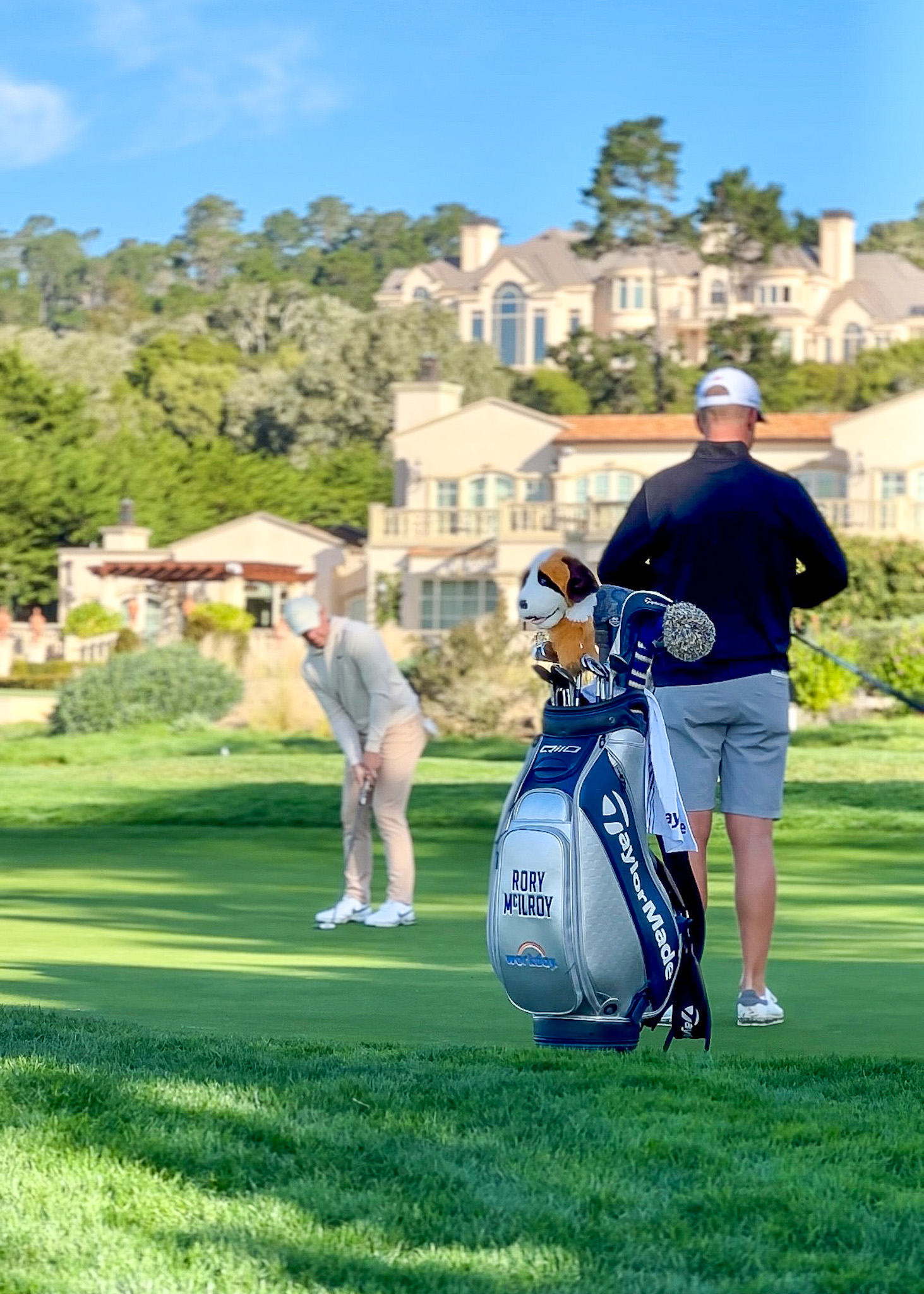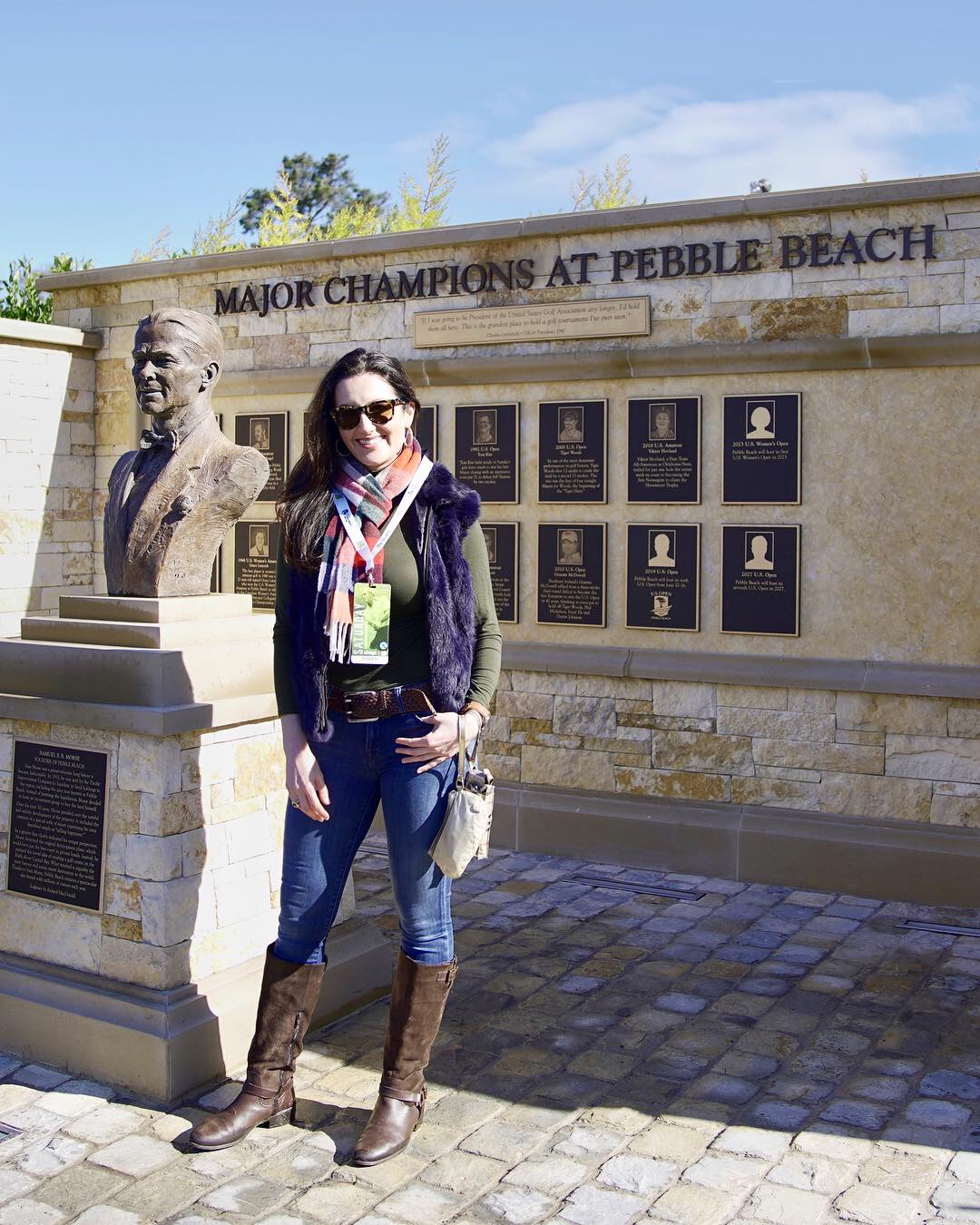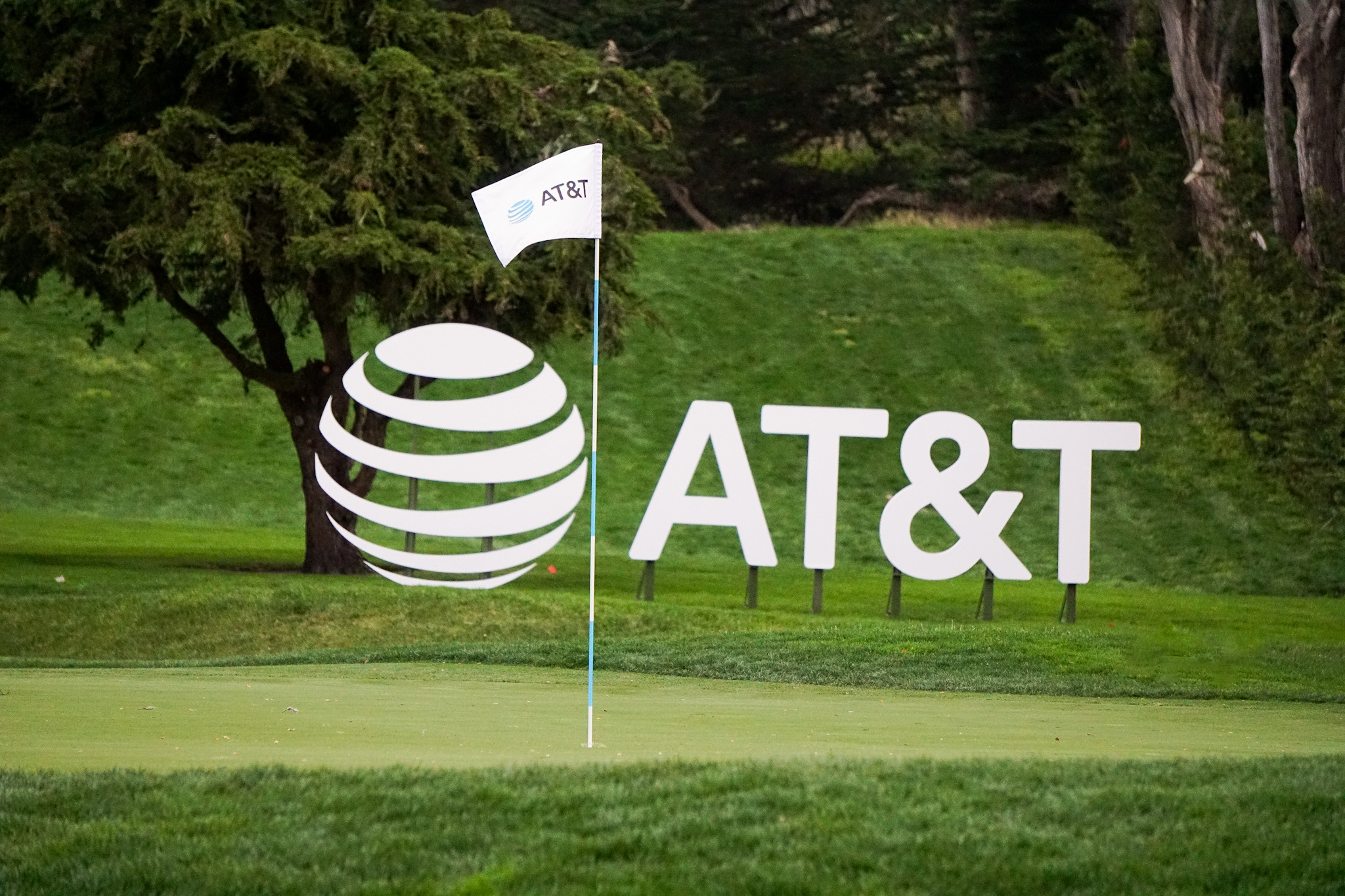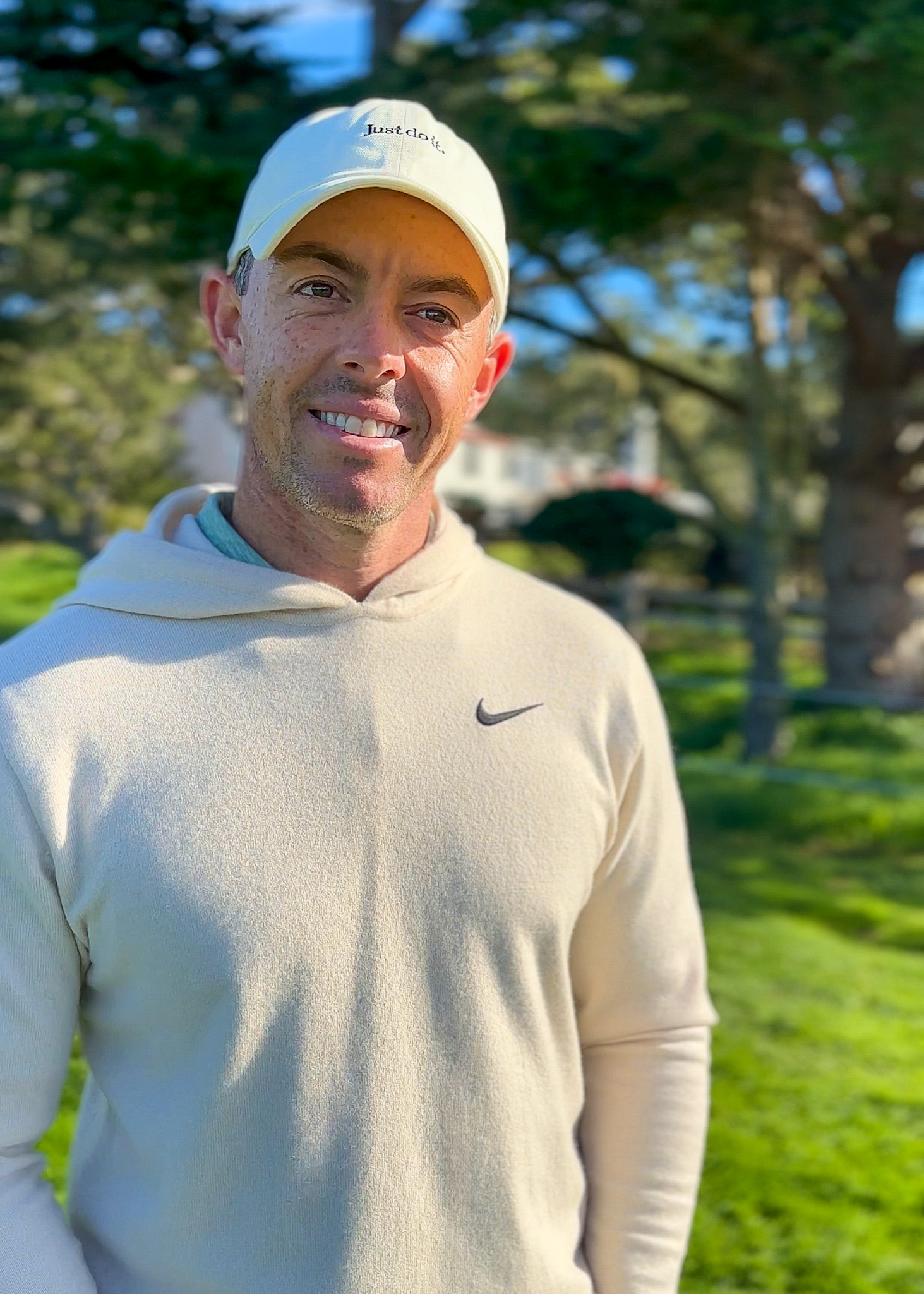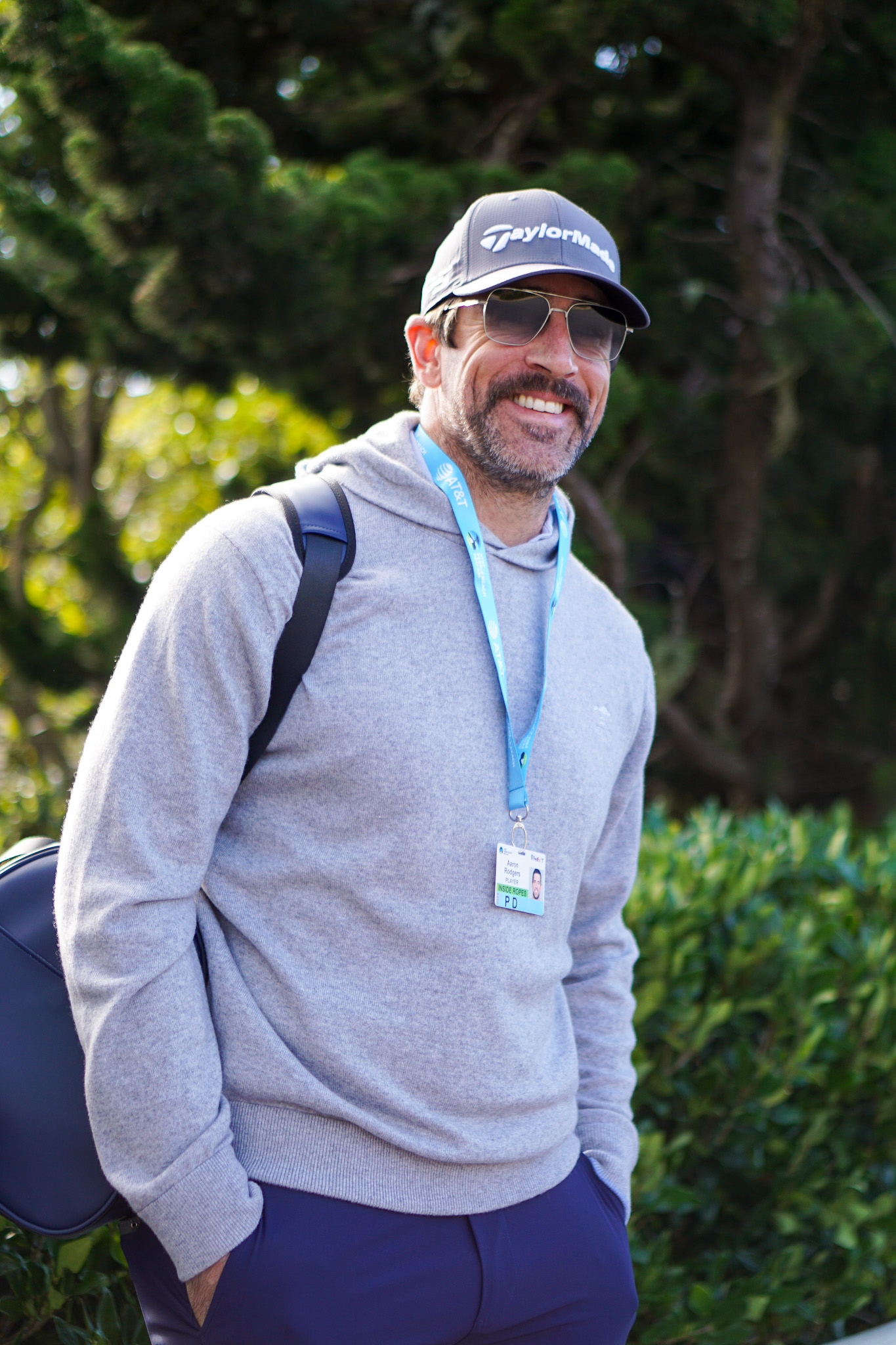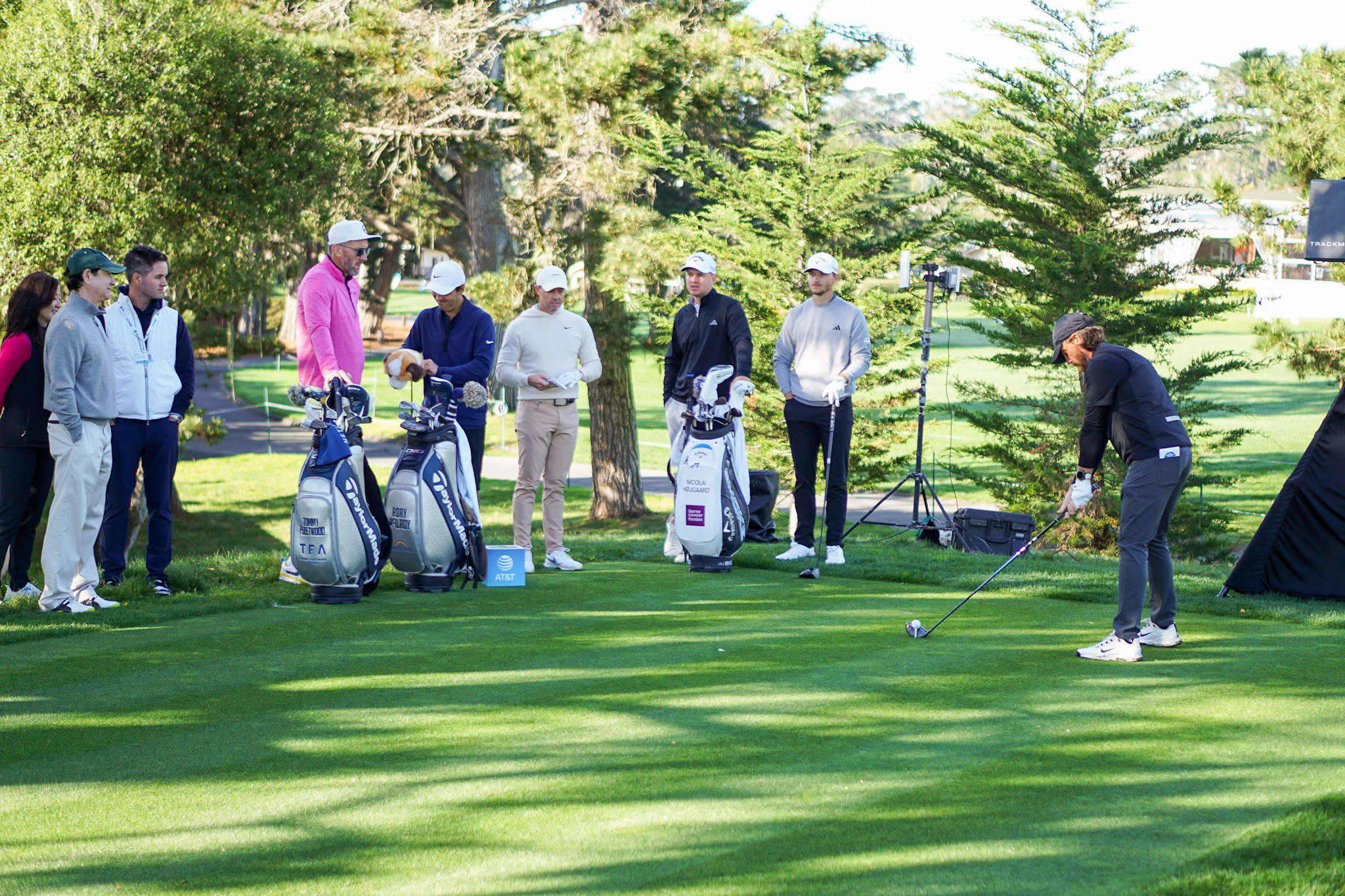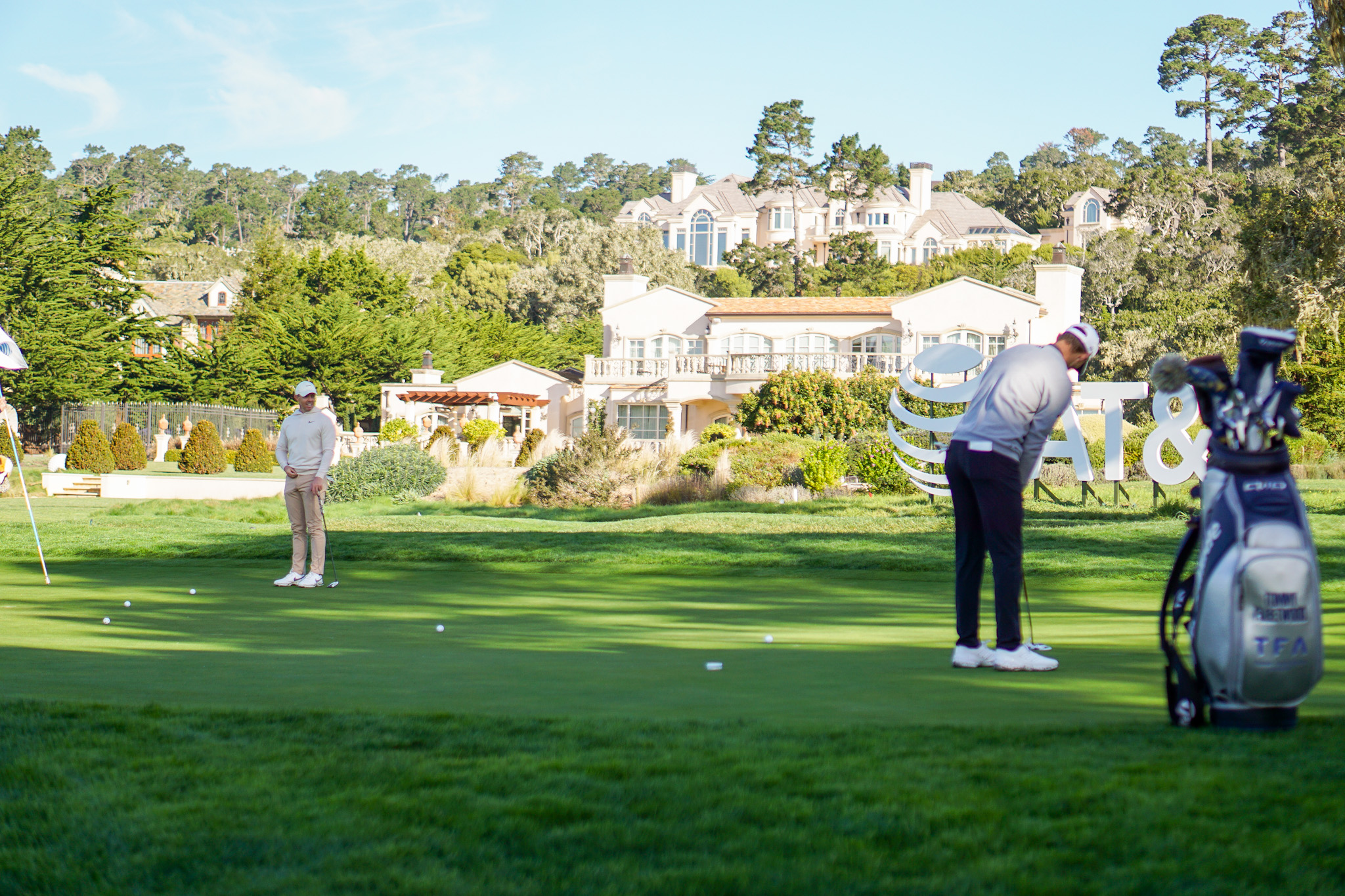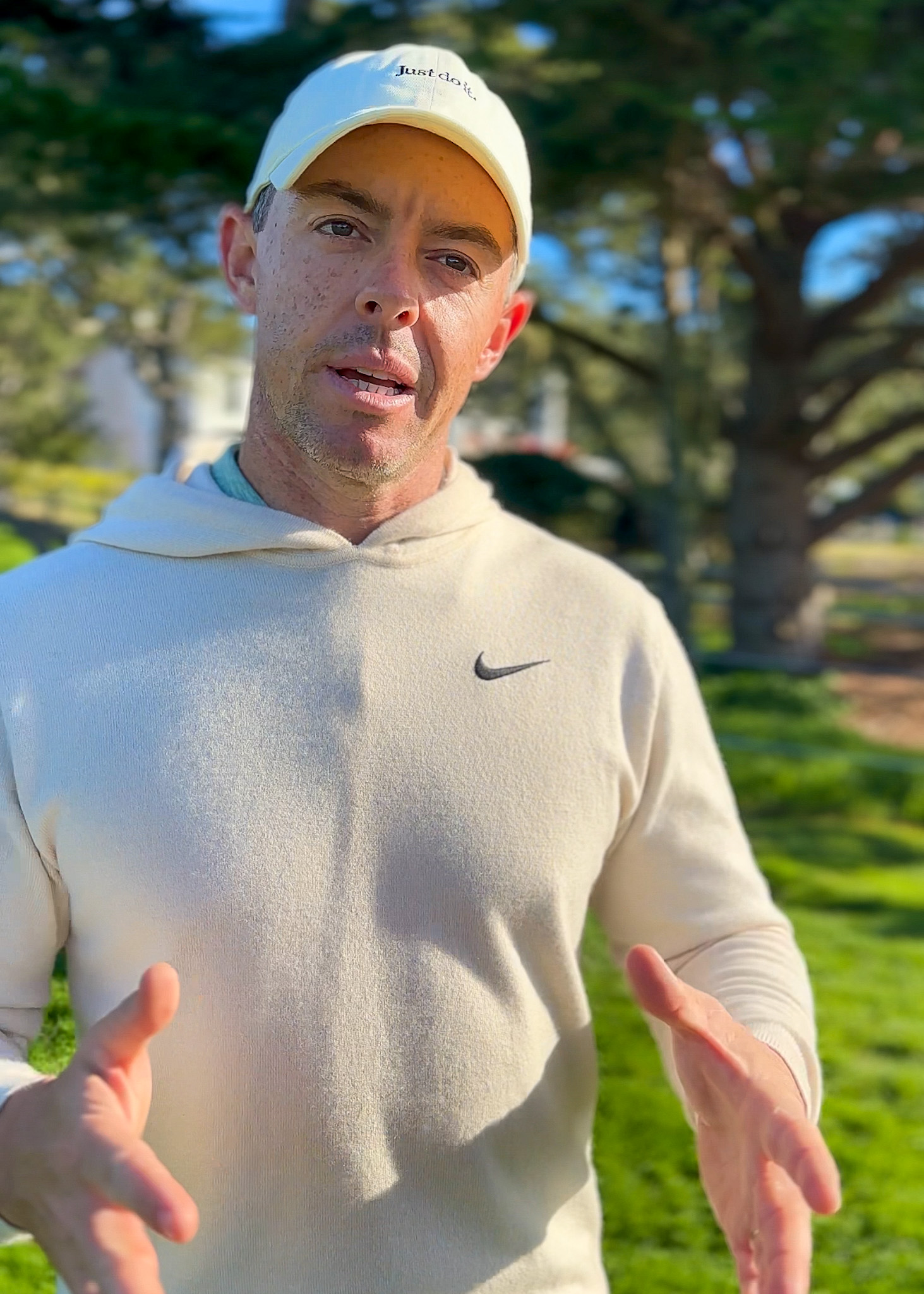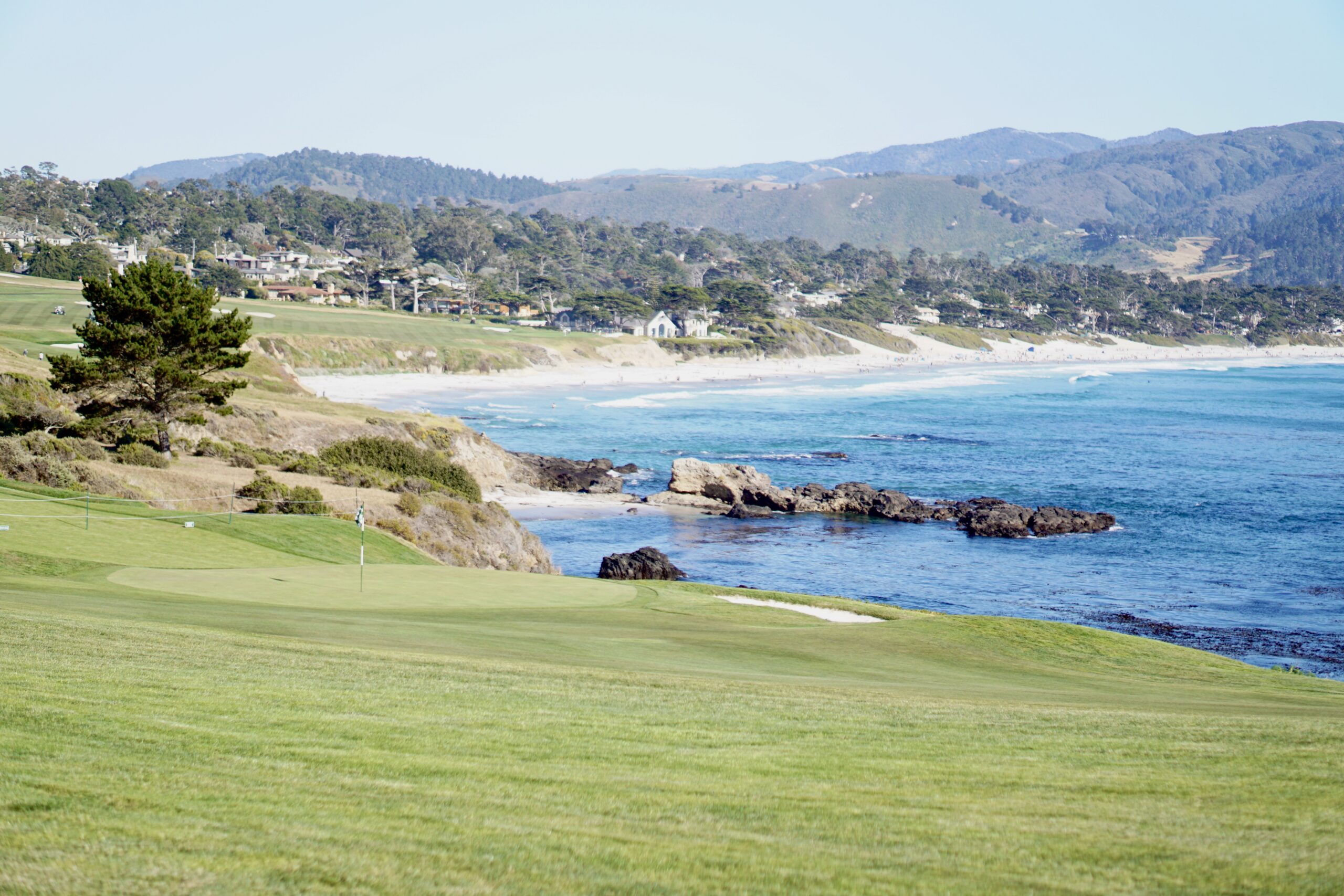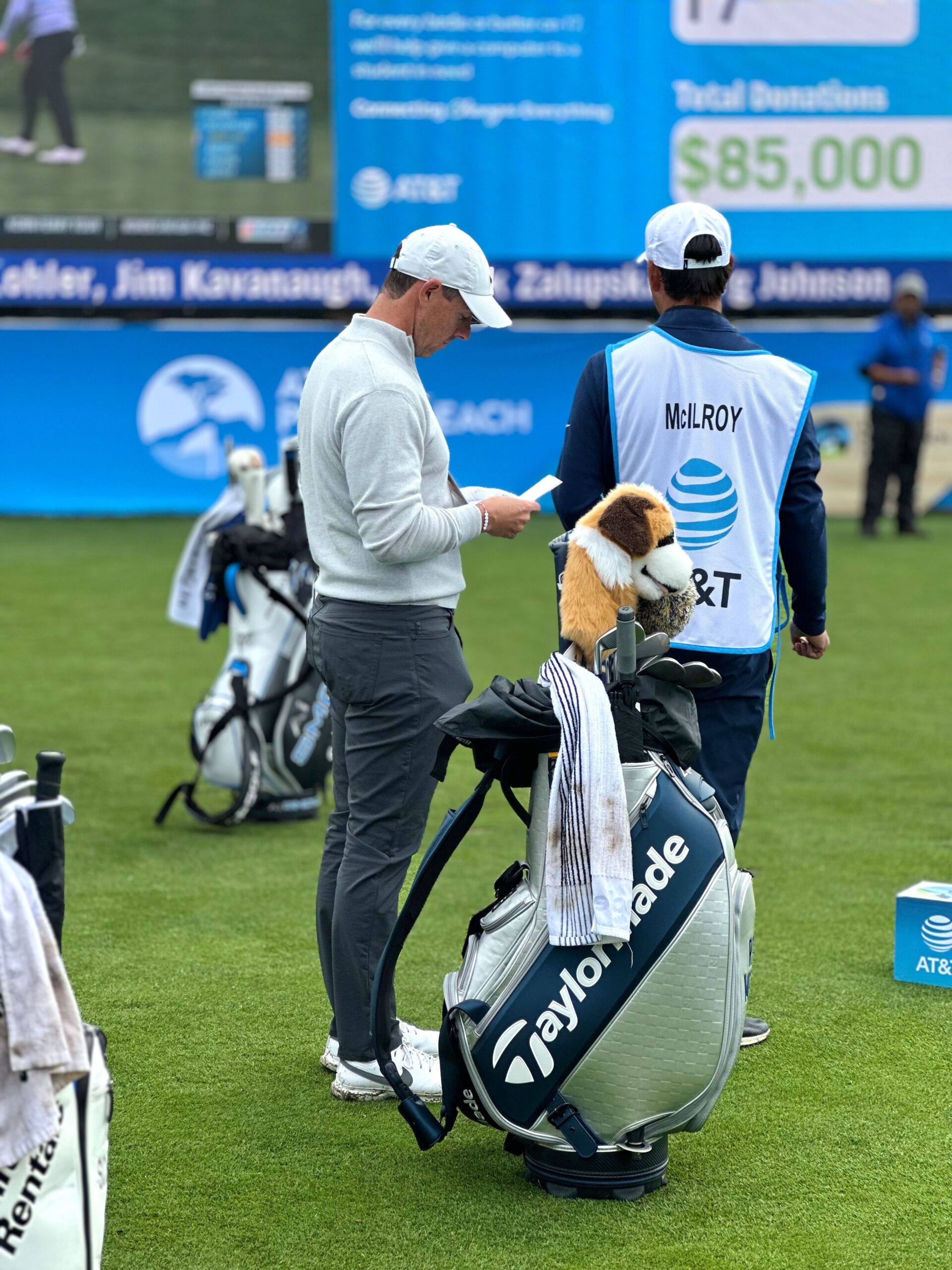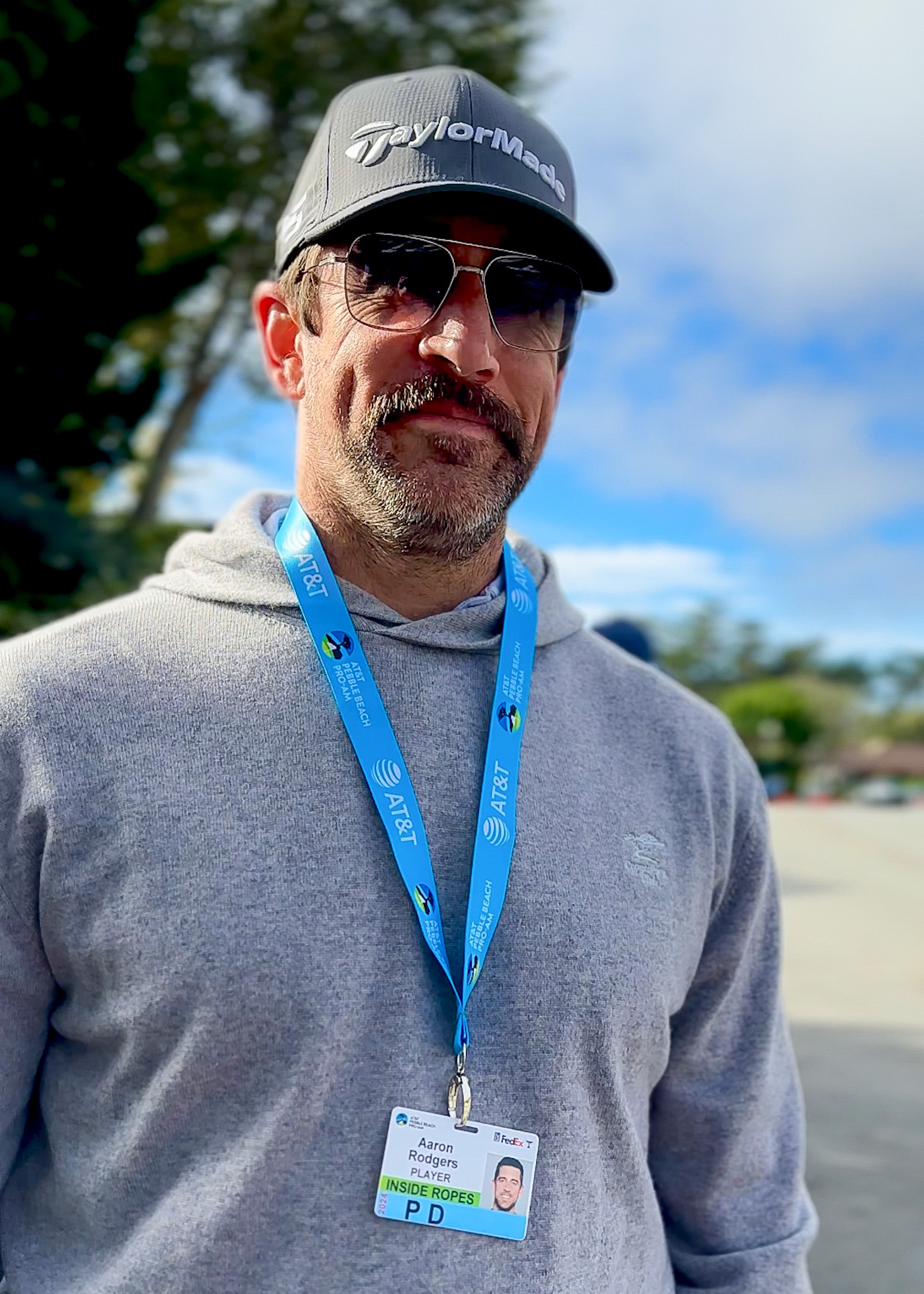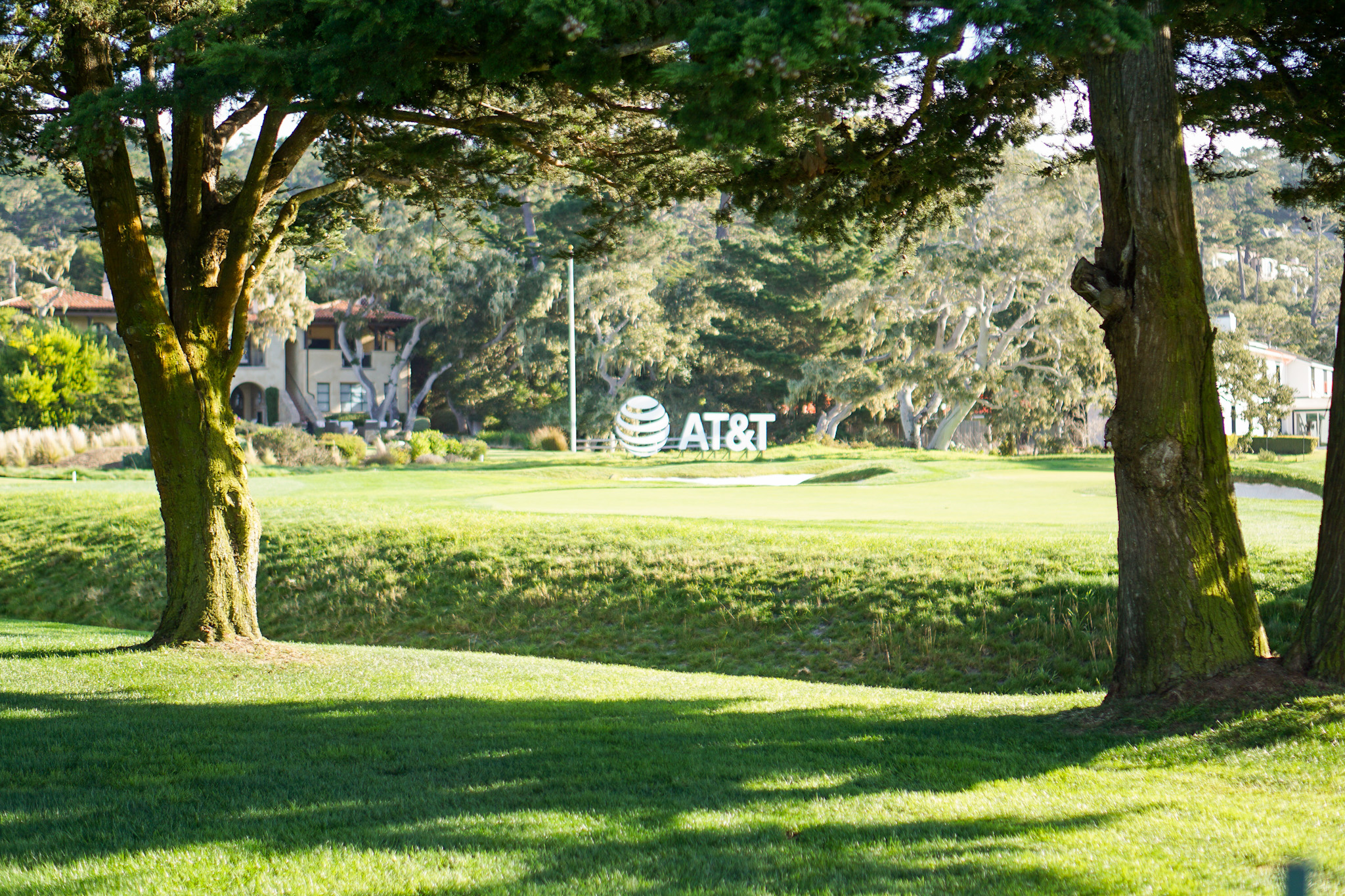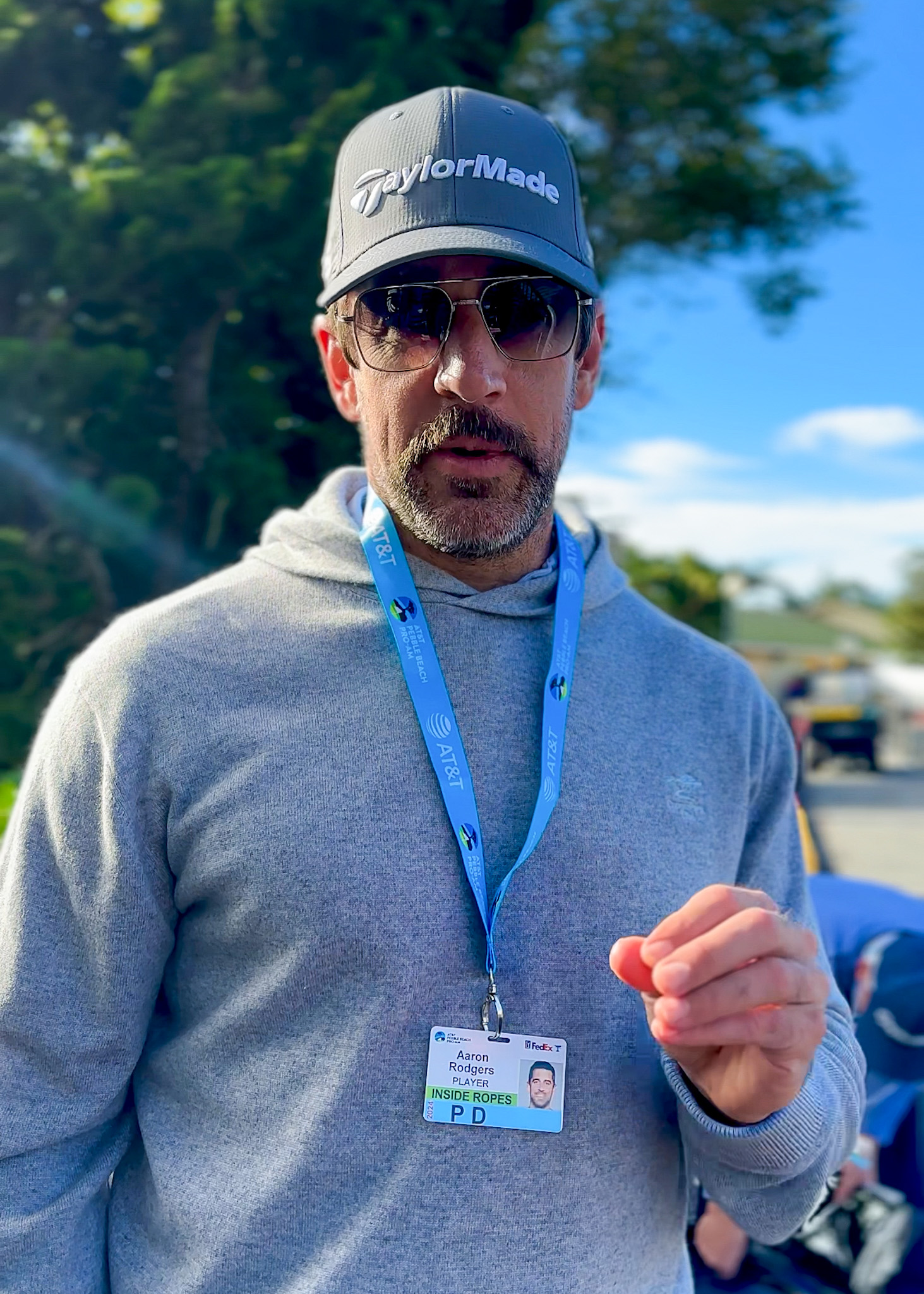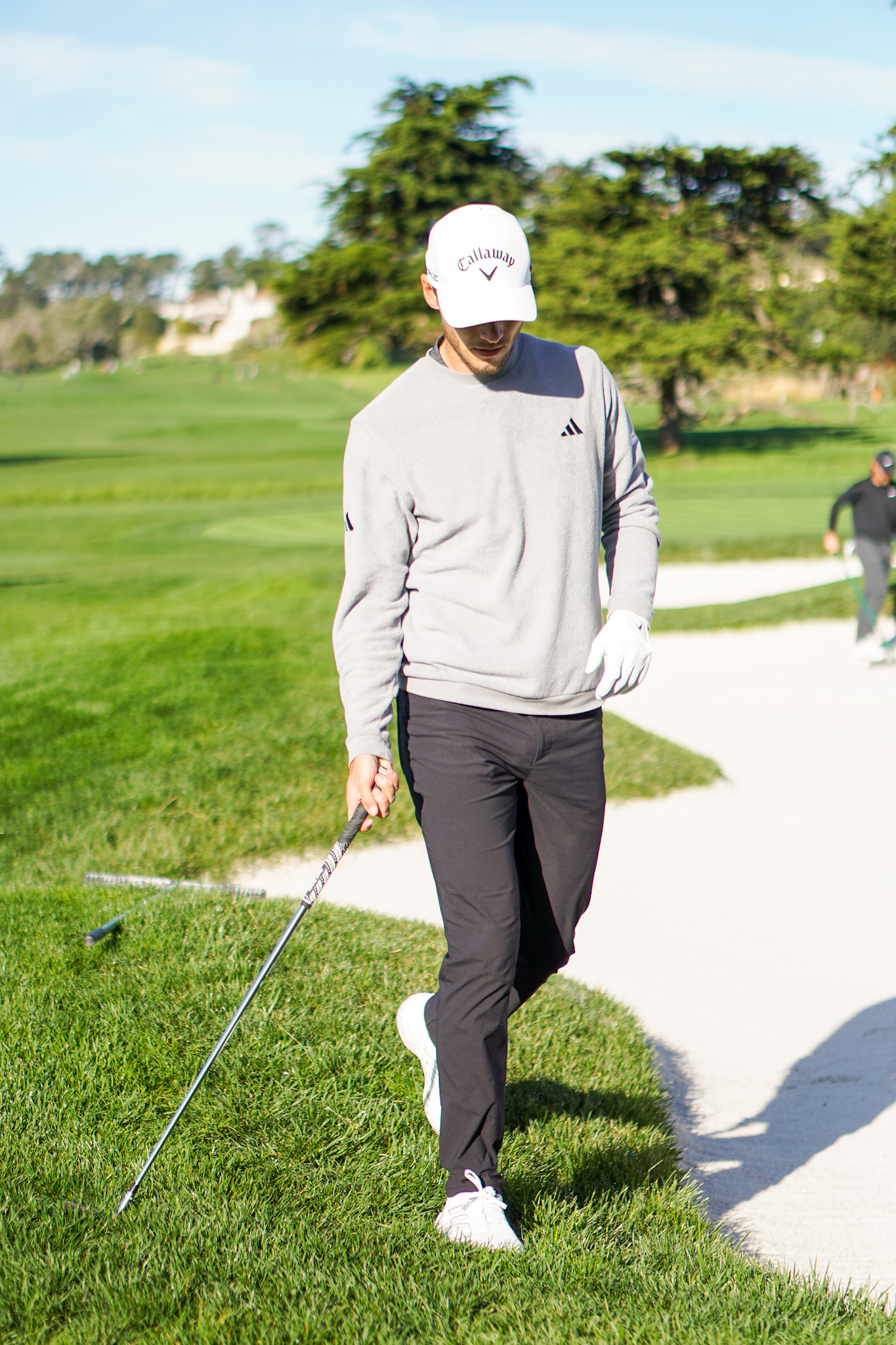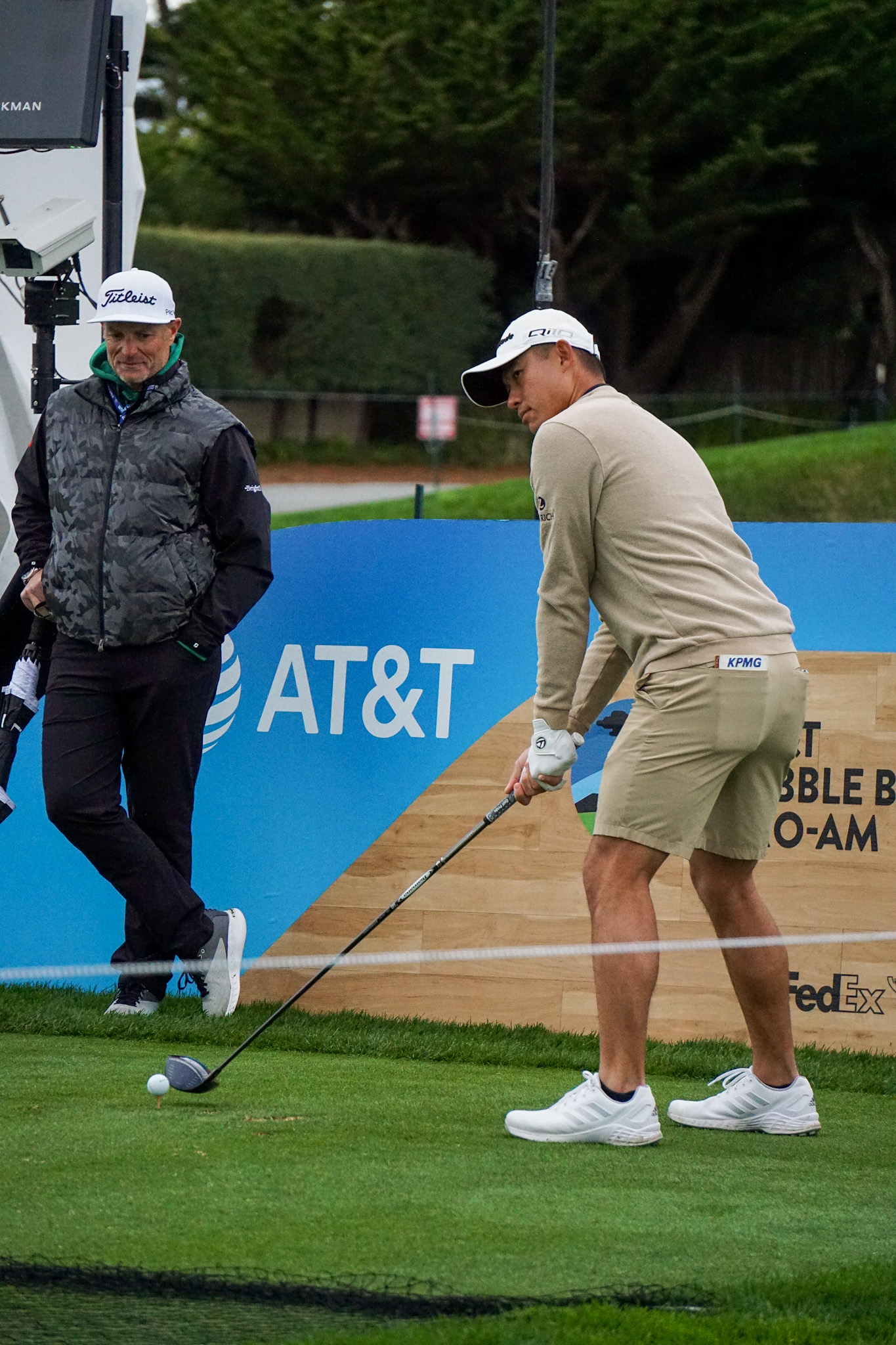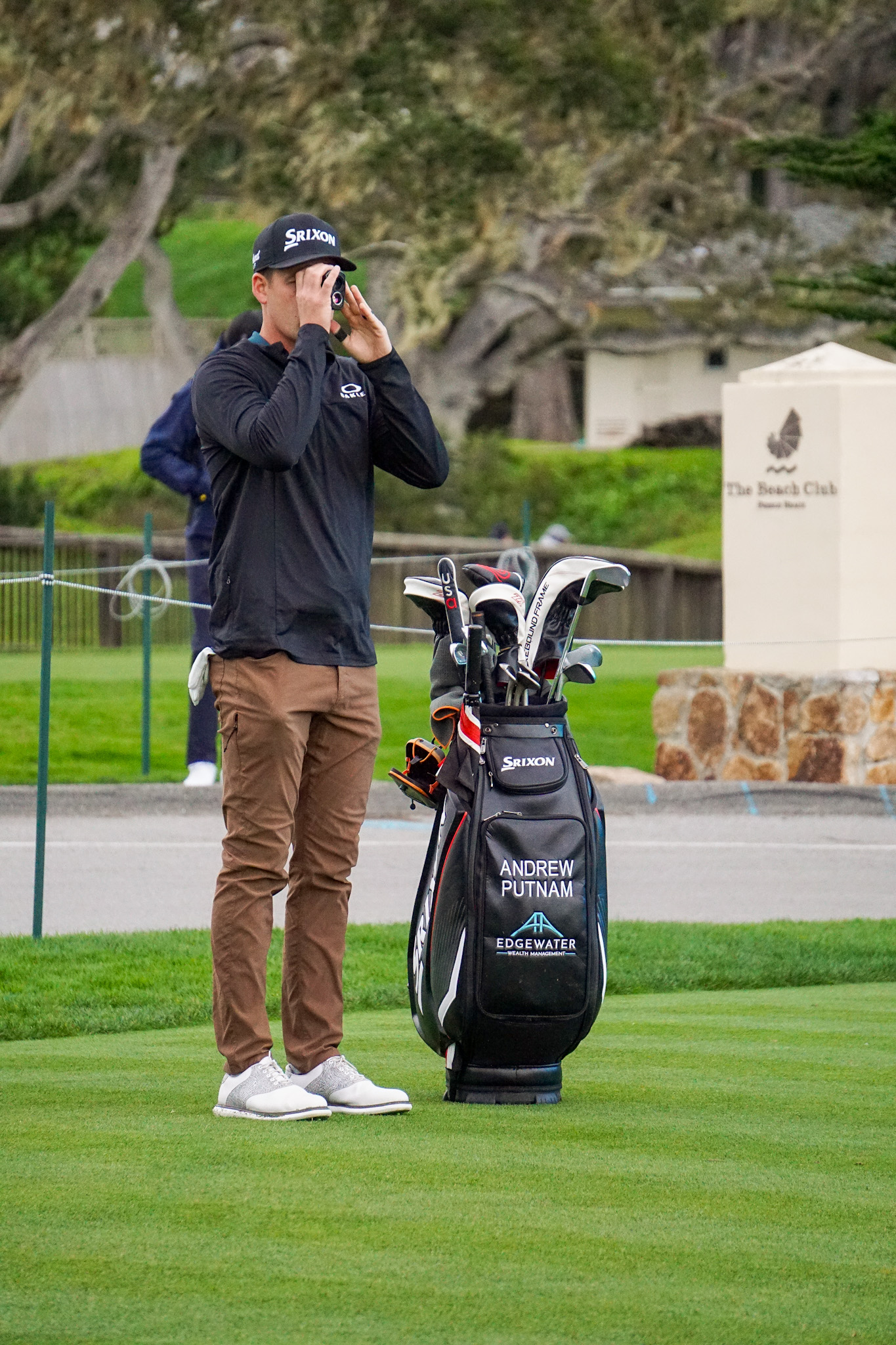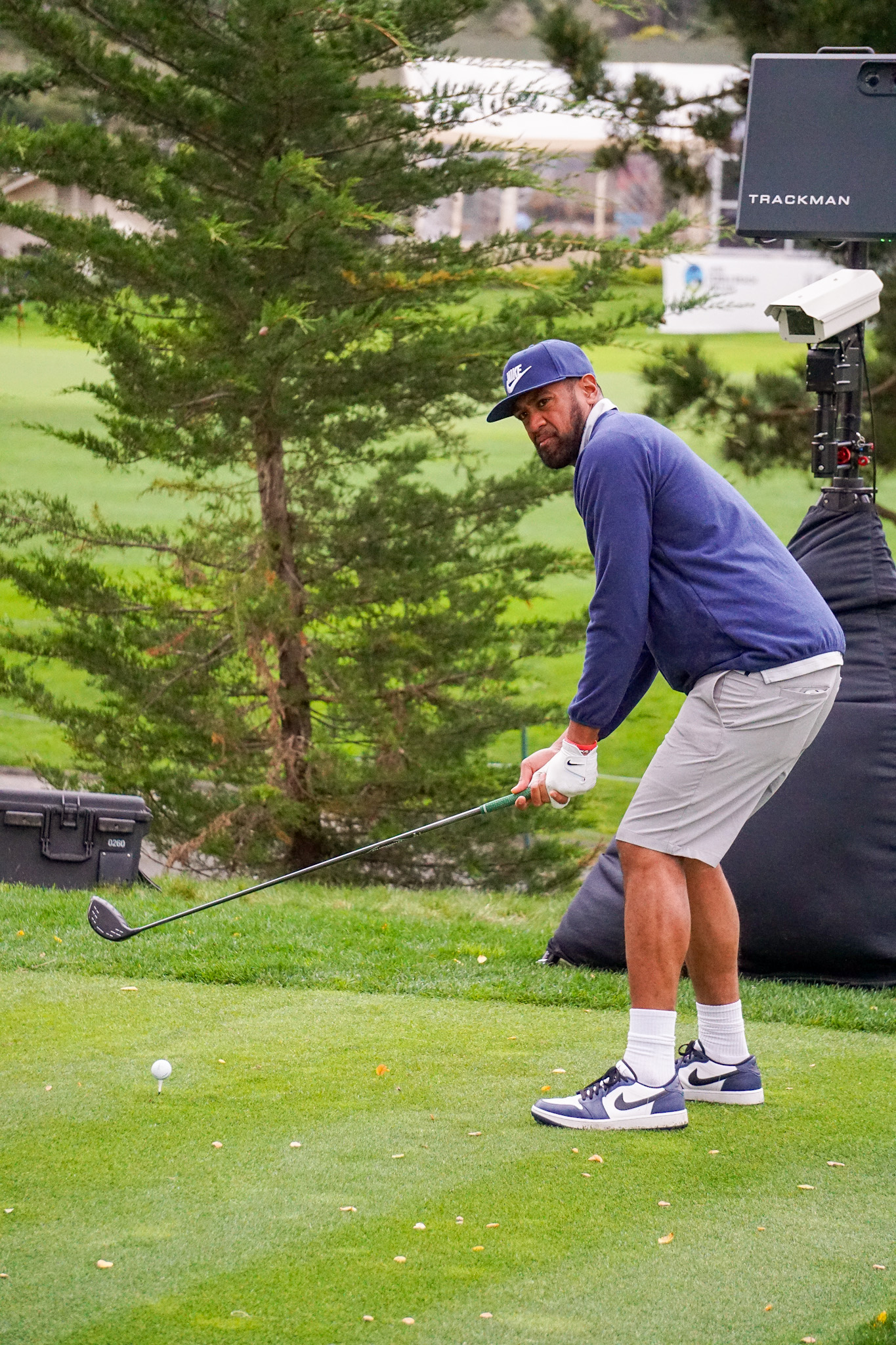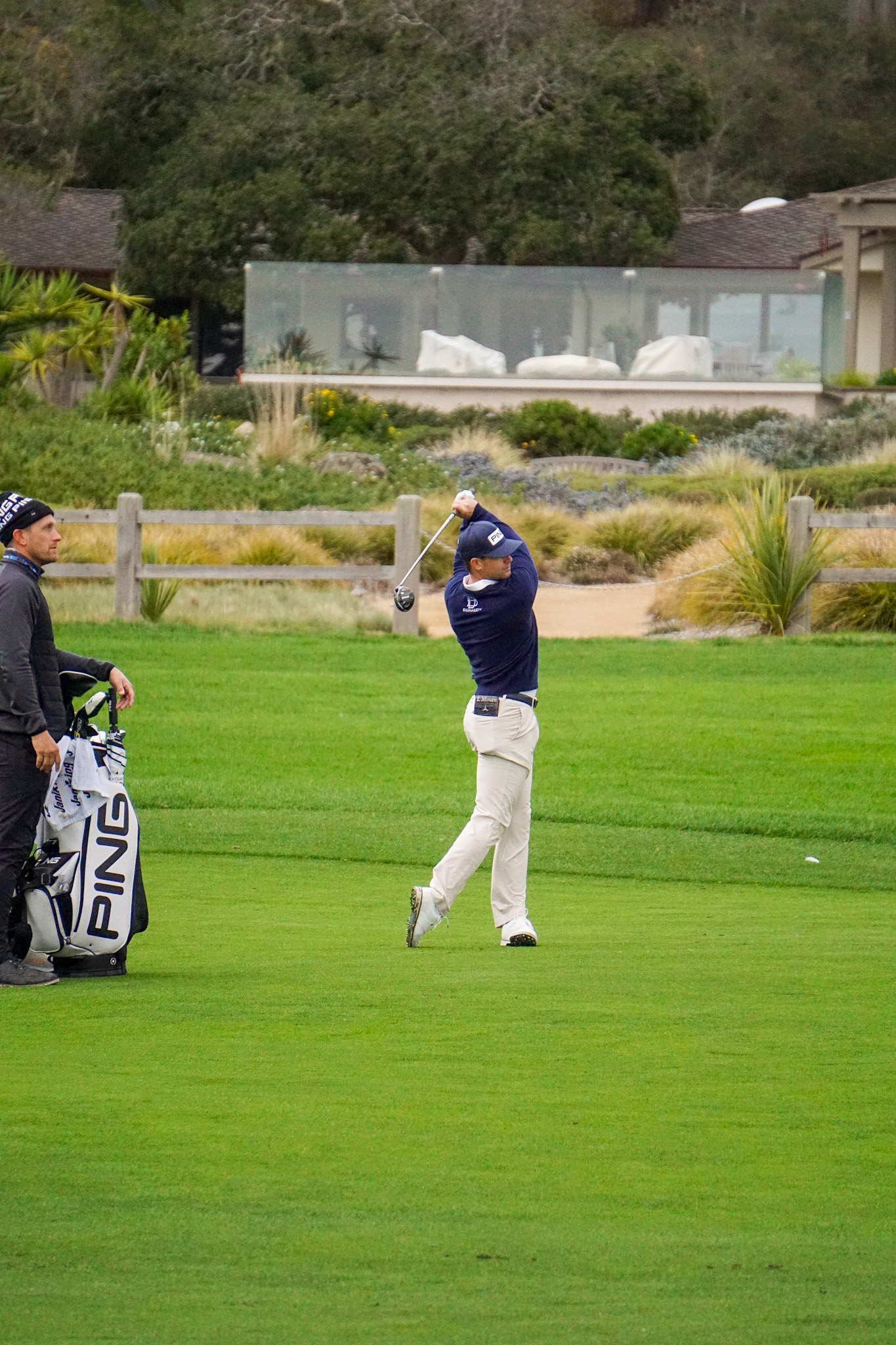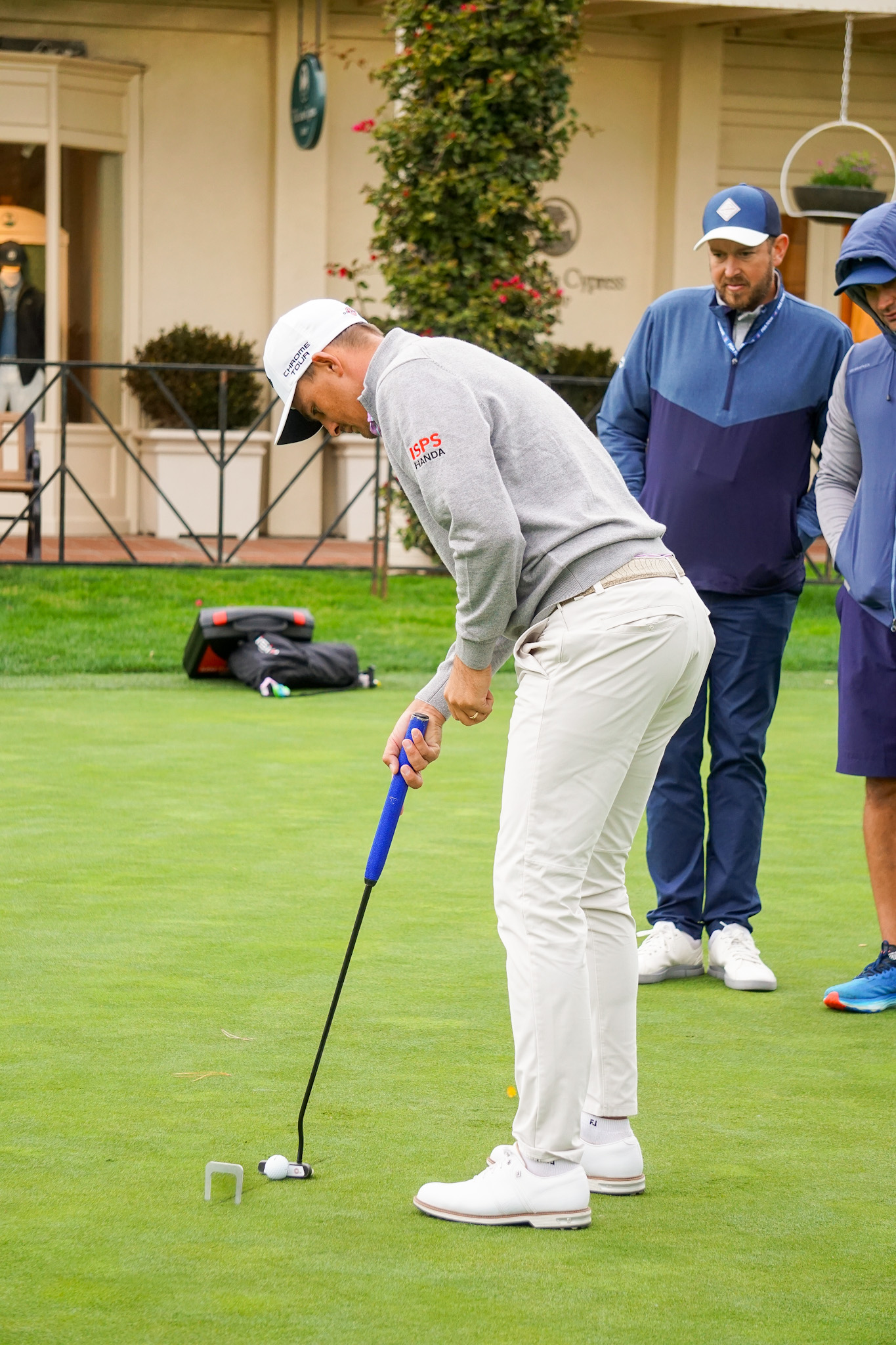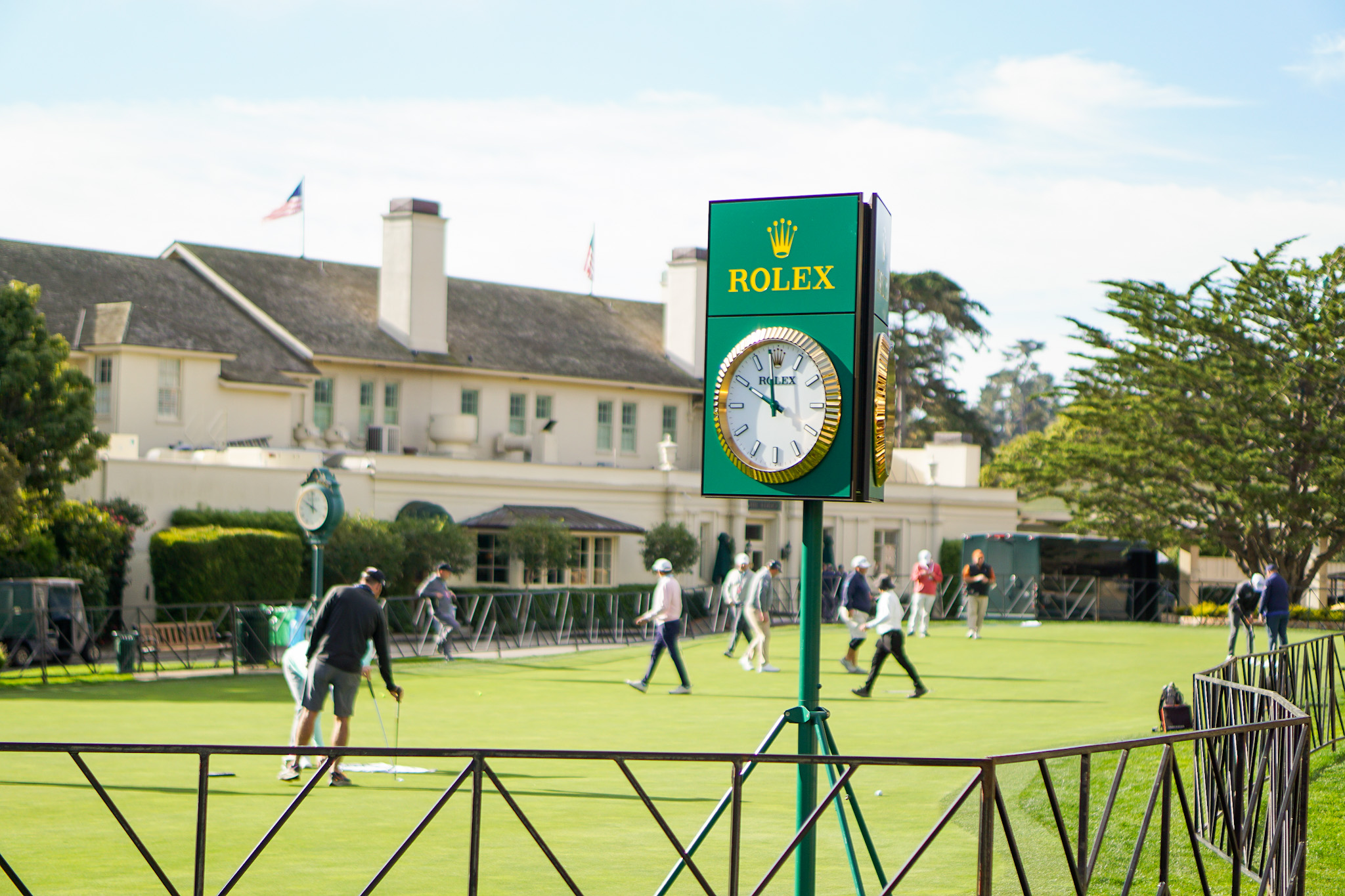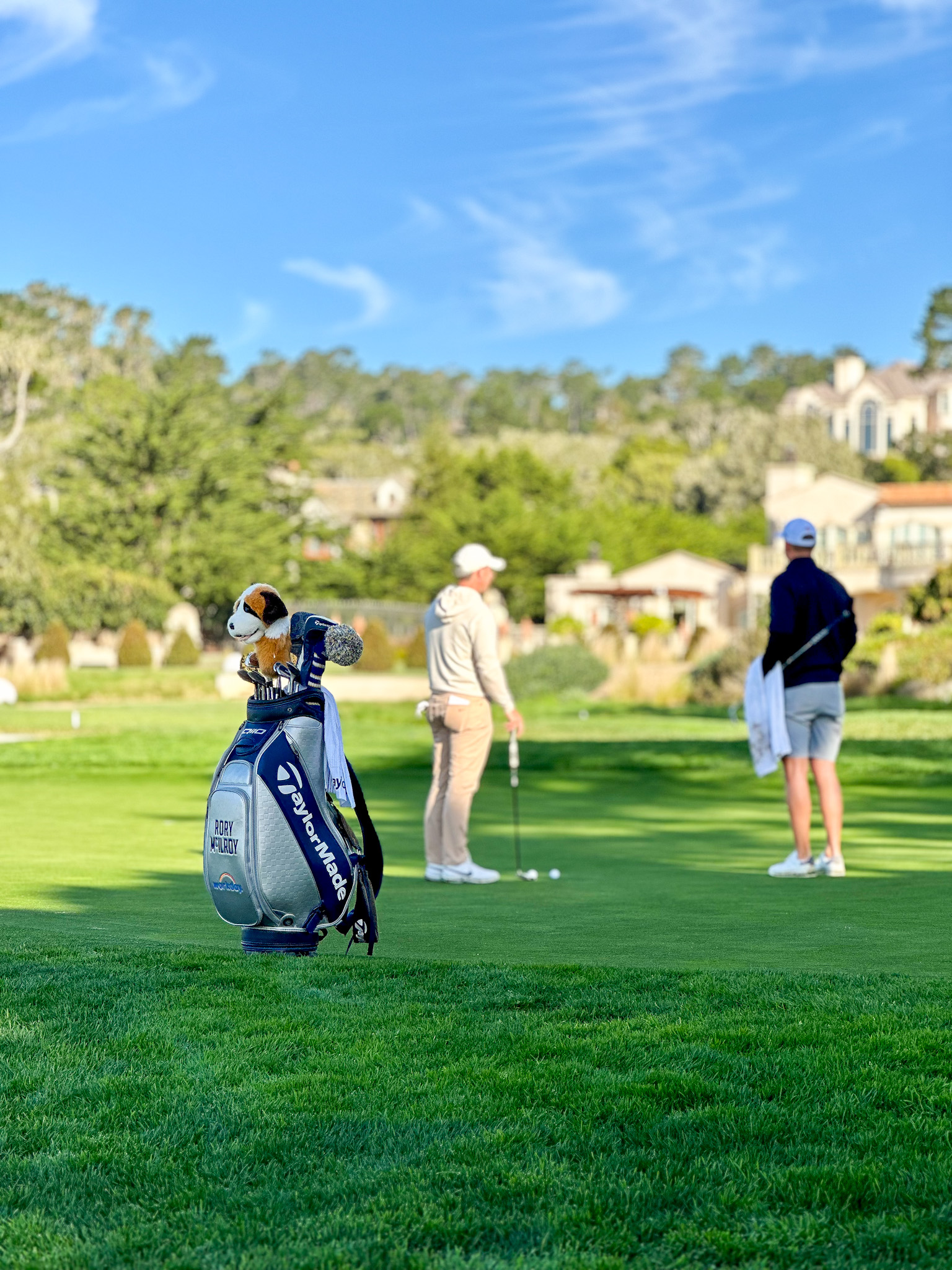[ad_1]
In the heart of Pebble Beach in beautiful Northern California, over the past week, the 2024 AT&T Pebble Beach Pro-Am Golf Tournament was more than just a gathering of elite golfers; it was a celebration of skill, community, and philanthropy.
But it’s so much more than that – it’s not only an opportunity to witness greatness first-hand (in the form of outstanding athleticism), it’s also a chance to learn more about how these stellar athletes train, practice, and perform under pressure.
About The 2024 AT&T Pebble Beach Pro-Am:
As a Pebble Beach native, I’ve attended the AT&T Pebble Beach Pro-Am Golf Tournament nearly every year since I was a child. As a result of growing up “inside the gates”, over the years, I’ve had the pleasure of meeting many of the notable players in this annual spectacle, from golf legends like Tiger Woods to top athletes and entertainers (such as NFL Champ Tom Brady, Actor Kevin Costner, Pro Surfer Kelly Slater, Comedian George Lopez, and more).
While the annual tournament is a showcase of both professional golfers paired with amateurs, this year’s format took on a different approach, as the event became a “Signature Tournament” for the PGA, and also came with a purse of 20 million dollars.
As explained by the tournament organizers “The 2024 AT&T Pebble Beach Pro-Am is one of eight Signature Events on the PGA TOUR schedule, joining Sentry Tournament of Champions, The Genesis Invitational, Arnold Palmer Invitational presented by Mastercard, RBC Heritage, Wells Fargo Championship, the Memorial Tournament presented by Workday and the Travelers Championship. Given the Signature Event designation, there (were) no celebrity events this year, and only a select number of notable amateurs (played) on Thursday and Friday.”
During this year’s event, I had the opportunity to dive deeper into the inspiring mindsets, motivational tips, and success strategies of two impressive players – Rory McIlroy (one of the world’s top professional golfers and the winner of 24 PGA tournaments), and Aaron Rodgers (NFL champion quarterback, Super Bowl MVP, and a previous winner of the AT&T Pebble Beach Pro-Am).
Since I’m not an expert golfer, but rather, am passionate about personal growth, learning how people think, deciphering what transforms them from “good to great”, and discovering the process by which they think and perform to the best of their ability, I decided to pivot our conversations into deeper topics – tapping into everything from their mental training to learning how they prepare for and handle the high-pressured nature of these televised major sporting events.
When you think about it, there are a lot of great athletes in the world – but to become a champion, goes behind talent and skill, it starts with mental training. That said, read on to learn the inspiring training tips and success strategies that these two superstar athletes tap into to drive their peak performance.
Interview with Champion Professional Golfer Rory McIlroy:
A conversation with pro golf superstar Rory McIlroy (currently ranked # 2 best professional golfer in the world) unveiled to me some of the secrets to his unparalleled success. From cultivating a winning mindset to navigating challenges, McIlroy discussed the mental fortitude required to compete at the highest echelons of golf. His journey from ‘good’ to ‘great’ serves as an inspiration for aspiring golfers and individuals in any field, proving that the right mindset can be the catalyst for achieving extraordinary feats.
CLP: Since the tournament is obviously a high-stakes game and you always have to be performing under pressure, how do you prepare mentally before you go into any tournament?
RM: “I think the one thing that helps me is, um, basically focusing on controlling what I can control. I think in golf there are so many different variables, whether it be different golf courses, different conditions, or playing against different competitors. The nice thing about our sport is you can just focus on yourself and control what you can control. To me that’s always been a, it’s been the best mindset and the best strategy to adopt, but also there’s a level of comfort in there that if, if you can concentrate and focus on just what you’re doing and nothing else, then usually everything sort of takes care of itself after that.”
CLP: I would agree with that. I grew up in Pebble Beach, so of course I had to learn golf. In golf, I call it the ‘zen zone’ – when you’re really in that focused state. How do you stay focused when there are people around, there’s pressure and even the media? How do you get yourself into that balanced mental state when you have all this pressure on you?
RM: “Sometimes I sort of call the five Rs that we spend on the golf course inside the ropes. It’s like my getaway time because, all those external factors like you talk about, whether it’s the media or whatever, pressure from others, I feel like none of that can get to me once I’m on the golf course and I’m inside the ropes. So again, it’s like a certain level of comfort. But then also the one thing that you need to do in golf, maybe compared to other sports, is – because we’re out here for a long time, you need the ability to be able to switch on and off or in and out of that mental state. So yeah, for the minute or so that I’m approaching a golf shot and I’m hitting a golf shot, yes, I’m in that zone, but I think it’s really important to be able to snap out of it as well because trying to concentrate for five hours consecutively is very fatiguing. I think it’s not the best strategy to adopt.
CLP: I understand that. I was speaking with a former PGA golfer this week, and he talked about “cues” – he said they call it “velcro on; velcro off” (which refers to taking your glove on and off). He said that because you have just so much time to focus – like 48 minutes or something of true focus – there’s this mental clarity that happens when you’re there, but for the rest of the time, you talk to your caddies or everyone else about everything but golf. Is that true?
RM: “Yeah absolutely. Yeah. You try to, I’ve always liked that where, yeah, you’ve got your focus time when you’re hitting the golf shots and you’re, you’re doing your thing, but then there’s a lot of time to fill. And for me, it’s always been nice to talk about other things, to take my mind away from it a little bit because it keeps you relaxed, it keeps you loose, and yeah, that’s sort of the strategy that I would adopt with my caddy. I can say to him – talk to me about anything. I love it. Yeah, I think it just keeps you in a nice, calm, relaxed state.”
CLP: What do you love about Pebble Beach?
RM: “The scenery and the views… We go to so many places where humans have disrupted the landscape and this has stayed pretty much undisrupted, for history. And, I love that about it.”
Interview with Champion NFL Quarterback Aaron Rodgers:
NFL legend and Super Bowl MVP Aaron Rodgers (who is now the Quarterback for the New York Jets), who was also a participant in this year’s golfing spectacle (in addition to being a defending pro-am champion, as he won alongside Ben Silverman in 2023), shared with me his unique perspective on the strategies that transcend both football and golf. Emphasizing the importance of visualization, mental preparedness, tactical strategy, and teamwork, Rodgers and I chatted about how he translates his competitive spirit from the football field to the golf course. His insights offer valuable lessons on adapting strategies for success, underscoring the universal principles that drive champions across different domains.
CLP: First of all, what do you love about playing in the AT&T Pebble Beach Pro-Am Golf Tournament?
AR: Well, I love being around the competition. I have so much respect for the golfers in their process and just their focus. And I got exposed to it the first year I was with Jim Furyk and Darius Rucker. Darius is a good friend, and just watching Jim be able to turn off and on his competitiveness, walking on the fairway, BSing having a good time, and then heading over to his ball, and just see the competitiveness start to kick in. He’s been a great player for his entire career, so there’s a lot of respect for the guys and their process, and, I love competing myself.
CLP: That’s interesting that you mentioned that. I just interviewed Rory McElroy and we were talking about the ability to focus on the course, and he said, that because it’s such a long game, of course, you only have a limited time to truly focus, and the rest of the time you’re talking to caddies and to the people you’re playing with, and just enjoying yourself and relaxing as much as you can. How do you get into what I call the ‘Zen Zone’?
AR: “Well, I think there’s a lot of different ways you can do it. I think the important thing like Rory was saying is to be able to have that balance, to be able to not be switched on the entire time. I think that’s too much for your nervous system and too much pressure. So, I like to have a good time with the boys on the field and use those TV timeouts as a kind of a recentering and a refocusing and make some jokes, have some laughs, point out things in the stands you see, or something on a jumbotron. But then once that whistle is blown and you’re in the huddle, and you’re calling the play, that’s when the mindset, that focus, and that preparation kicks in.
But, I think there’s an important part of the whole game day experience where box breathing has played a significant role for me over the years as I’ve worked on it to help lower my heart rate and keep me in the moment. I’ve heard a lot of golfers talk about doing the same type of thing, and I’ve passed on that knowledge to a lot of friends, and colleagues in my sport and other sports, as it’s a way to relax your nerves and lower your heart rate.”
CLP: Do you do other forms of visualization training?
AR: The visualization happens for me throughout the week. So I will spend time after I’ve looked at the film and pair that with the game plan, and then start to put myself in the game and visualize those things happening. I believe in the power of manifestation. But that starts with your thoughts and you’ve gotta see yourself doing the plays. Your mind doesn’t know the difference between a visualization and the actual reality. So I think most people don’t realize that.
CLP: That’s your subconscious at work. I completely agree with that. I had a college psychology professor who was the US Olympic Ski Jump Sports Psychologist, and he talked about that because it was about the power of your subconscious mind. It’s like a dress rehearsal. So when he was training them, they had to fully visualize every little thing that they were doing, and by the time they were going to physically do it, it was like their body already just knew what to do. So I love that you mentioned that because that’s something I find interesting.
AR: “It’s true. We had, in Green Bay, a great sports psychologist who would have us practice this in a small way by picking one or two plays. But I’ve been doing visualizations since I was a kid. I had a great coach growing up who would challenge us to work on the visualization the night before the games and see ourselves making the shots, making the passes, and doing our job. I never like to stop by just two plays though; I like to visualize certain situations in the game and plays that I think are going to get called and defenses I think are gonna get called, kind of pairing those things together because I just believe it’s an important part of it. And, when you break the huddle to have that confidence that you’ve already actually played this play out – to me, it served me well over the years.”
Both Rory and Aaron shined a light on the significance of visualization techniques and unwavering focus in their respective sports. Their shared belief in the power of mental rehearsal and concentration underscores the importance of cultivating a robust mental game to achieve greatness. Whether it’s picturing the perfect swing or visualizing success in a critical moment, these techniques form the bedrock of their achievements.
Beyond the well-manicured greens, the tournament serves a grander purpose – to not only act as a global showcase for Pebble Beach Resorts and its world-famous golf courses but also to act as a significant fundraiser for charities on the Monterey Peninsula. Each swing and each birdie contributes to a larger cause, weaving a tapestry of positive impact within the local community. The Pebble Beach Company’s commitment to these charitable causes elevates the tournament’s significance, making it a beacon of excellence beyond the golfing world.
Interview with John Sawin, Vice President & Director of Golf at Pebble Beach Company:
To further expound upon this mission, John Sawin (VP & Director of Golf at Pebble Beach Company) shared with me the following insights about why this annual event is so significant for both the company and the greater Monterey Peninsula.
CLP: How do you believe the annual Pebble Beach AT&T Golf Tournament contributes to the cultural and economic fabric of the Monterey Peninsula, and what unique aspects of this event showcase Pebble Beach Resorts as a premier destination for both golf enthusiasts and casual visitors?
JS: “Now in its 78th playing, the AT&T Pebble Beach Pro-Am has become an integral part of the Monterey Peninsula. While fans flock in droves during event week, the real benefit to our community is felt long after the crowds depart, as millions of charitable dollars are distributed to over 200 deserving non-profits across the region each year. In fact, the tournament has earned the distinction as the most charitable event on the PGA TOUR, being the first to surpass $200 million in lifetime giving.
As fans have seen over the years, the AT&T Pebble Beach Pro-Am is the rare spectacle that brings together the worlds of golf, sports, and entertainment on one grand stage, set against the incomparable beauty of Pebble Beach. As the world’s best golfers compete on one of the grandest stages in their sport, legends from other sports, such as Tom Brady and Buster Posey captivate an audience that extends beyond professional golf. It’s a winning formula that makes the television broadcast from Pebble Beach one of the most watched golf events of the year.”
CLP: With the Pebble Beach AT&T Golf Tournament being part of the PGA Tour, how does this event align with the resort’s broader strategy to position itself as a world-class golf destination? Can you highlight any enhancements or special features introduced this year to elevate the overall experience for players and spectators?
JS: “As one of its longest-running host sites, Pebble Beach has enjoyed an iconic partnership with the PGA TOUR that strengthens both entities. Through the AT&T Pebble Beach Pro-Am, the breathtaking beauty, history, and mystique of Pebble Beach and Spyglass Hill are shared with the sports world every February. What separates this venue from most others is that golfers of all skill levels can take their shot during the other 350+ days each year we are open to the public. Baseball fans can’t take the field at Fenway or Wrigley, basketball fans can’t square off at Madison Square Garden, but anyone is invited to create their own memories at Pebble Beach and Spyglass Hill.
On the course, one of the main differences fans will notice is a total revamp of the infrastructure surrounding the 18th green. While prime viewing at the iconic finishing hole has historically been reserved for corporate sky suites, those hospitality partners have now been moved into the Lodge, creating room to increase the number of public grandstand seats 5x and bringing fans closer to the exciting finish than ever.”
CLP: Beyond the competitive aspect, the Pebble Beach AT&T Golf Tournament often attracts a diverse audience. How does the resort ensure that the event is not only a thrilling golf competition but also a platform to showcase the luxurious amenities and breathtaking landscapes that make Pebble Beach Resorts stand out among other golf destinations?
JS: “While the players deliver world-class play, our team is committed to ensuring that our guests have an unforgettable experience outside of the ropes. Whether it’s our Visitor Center that guides guests through the history of Pebble Beach, a walk through the tree-lined holes on Spyglass Hill or taking in the scenery of 17-Mile Drive, there is truly something here for everyone on the course and beyond. Many of our guests are drawn here for the golf but return because of the world-class service and amenities away from the course.”
Both on the golf course and in life, it’s evident that success is a journey shaped by mindset, motivation, strategy, visualization, and unwavering focus. After a weekend of harrowing weather (that ultimately led to the cancellation of the balance of the tournament’s play on Sunday), it resulted in the announcement of this year’s winner – Wyndham Clark, who not only won the 2024 Pro-Am tournament but also made history by setting a record-breaking score with a third-round 60, which is a course record for Pebble Beach Golf Links.
Over the decades that the tournament has been happening, the AT&T Pebble Beach Pro-Am Golf Tournament has become more than just a nationally televised golfing spectacle; it has become a testament to the enduring power of human determination, the pursuit of greatness, and the unrelenting drive to win.
[ad_2]
Source link
Jarastyle – #Discussing #Drive #Win #Superstar #Athletes #Rory #McIlroy #Aaron #Rodgers #ATT #Pebble #Beach #ProAm #Golf #Tournament
Courtesy : https://inspirationsandcelebrations.net/2024/02/2024-att-pebble-beach-pro-am.html


